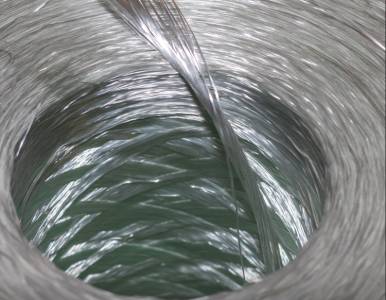Description
Glass Fiber: Strength, Durability, and Versatility Redefined
Glass fiber, also known as fiberglass, is a versatile and high-performance material composed of extremely fine strands of glass. Manufactured by melting and extruding glass, these strands are then combined to create a variety of products renowned for their strength-to-weight ratio, chemical resistance, and electrical insulation properties. This detailed description outlines the key features and applications of this remarkable material.
Key Properties and Benefits:
- Exceptional Strength and Durability: Glass fiber boasts an impressive tensile strength, exceeding that of many metals on a weight basis. This translates to lightweight yet incredibly robust structures capable of withstanding significant stress and strain. Its resistance to breakage and cracking makes it ideal for demanding applications.
- Lightweight Construction: Compared to other reinforcing materials, glass fiber is exceptionally lightweight. This significantly reduces the overall weight of components and structures, leading to improved fuel efficiency in vehicles and reduced structural loads in buildings.
- High Chemical Resistance: Glass fiber exhibits excellent resistance to a wide range of chemicals, acids, and alkalis. This makes it suitable for use in corrosive environments where other materials might degrade.
- Excellent Electrical Insulation: Glass fiber provides superior electrical insulation, protecting against electrical shock and preventing current leakage. This property is crucial in electrical and electronic applications.
- Thermal Resistance: Depending on the resin system used, glass fiber composites can offer good thermal resistance, making them suitable for high-temperature applications.
- Cost-Effective Solution: Glass fiber is relatively inexpensive to manufacture compared to other high-performance materials, making it a cost-effective option for a broad range of applications.
- Design Flexibility: Glass fiber can be easily molded and shaped into a wide variety of forms, allowing for complex designs and intricate geometries.
Types of Glass Fiber:
Glass fiber is available in various forms, each tailored to specific applications:
- Continuous Filament Yarns: Used extensively in composite materials, these yarns offer superior strength and dimensional stability.
- Roving: Bundles of continuous filaments used in composite manufacturing processes.
- Chopped Strands: Short lengths of fiber used in applications requiring less directional strength, such as molding compounds and fillers.
- Woven Fabrics: Woven from continuous filaments, these fabrics provide excellent strength and dimensional stability, often used in reinforcement applications.
- Mats: Randomly oriented short fibers bonded together, providing good strength and moldability.
Applications:
The versatility of glass fiber makes it suitable for a vast array of applications across numerous industries, including:
- Construction: Reinforcement in concrete, fiberglass-reinforced polymers (FRP) for structural components.
- Automotive: Body panels, reinforcement in chassis and other components.
- Aerospace: Lightweight components, structural reinforcement.
- Marine: Boat hulls, structural components.
- Wind Energy: Blades for wind turbines.
- Electronics: Circuit boards, insulation materials.
- Textiles: Reinforcement in fabrics.
- Pipes and Tanks: Corrosion-resistant linings and structures.
Conclusion:
Glass fiber is a remarkable material offering an exceptional combination of strength, durability, versatility, and cost-effectiveness. Its wide range of applications and superior performance characteristics continue to drive innovation across various industries, making it a cornerstone material in modern manufacturing.
